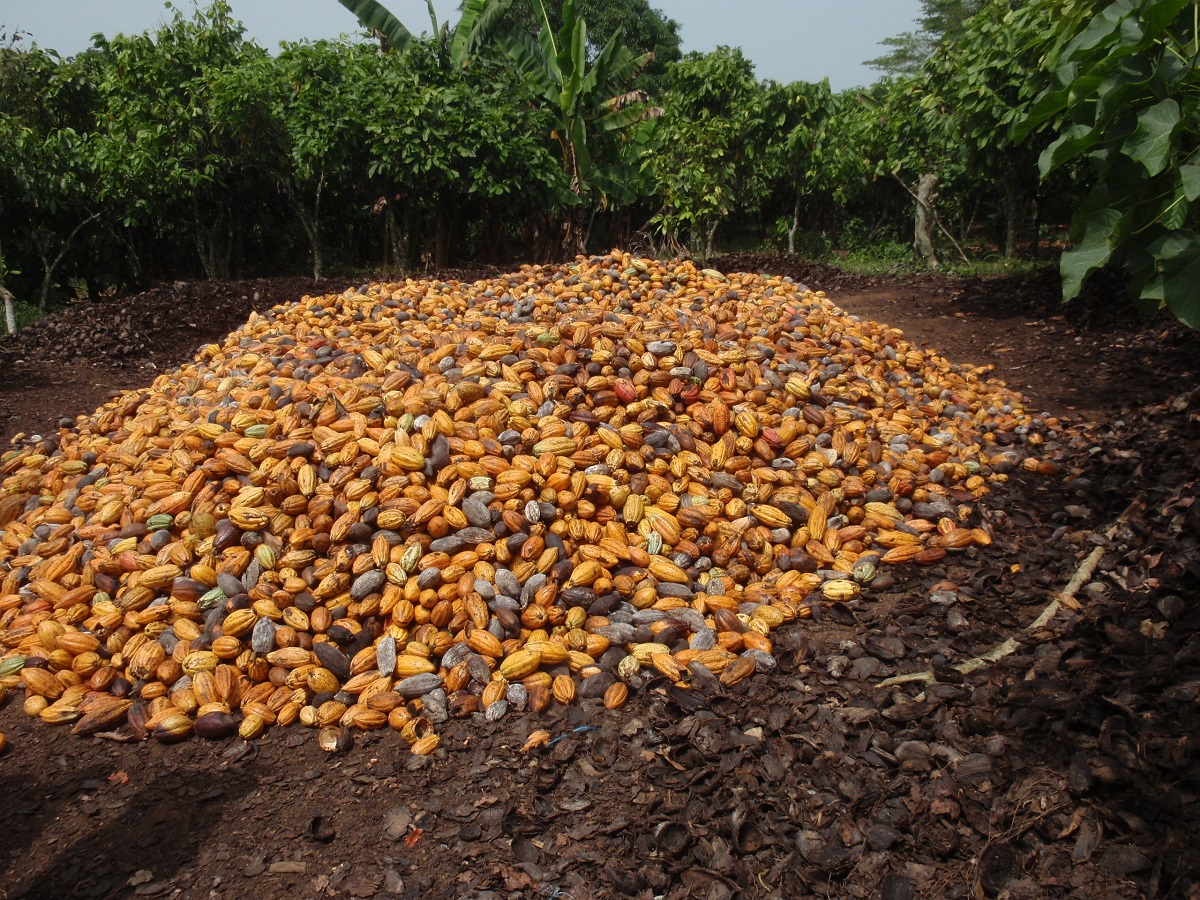Cocoa pods most impact on climate

Within the cocoa value chain, the residual products of the cocoa beans have by far the most influence on the climate. The good news is that both local farmers and the environment can benefit from better utilization of these residual flows. This is evident from an exploratory study that Partners for Innovation carried out together with local partner LONO for the Dutch Enterprise Agency (RVO) and the Dutch embassy in Ivory Coast.
In West African countries such as Ivory Coast and Ghana, the cocoa sector is an important source of income. As the largest cocoa importer in the European Union, the Netherlands is one of the most important trading partners of both countries. The Netherlands wants to support the sector by improving production and reducing the negative impact on the climate. In the context of the Climate and Energy Response Facility, Partners for Innovation has therefore carried out an exploratory study into the climate impact of the cocoa chain for the Dutch Embassy in Ivory Coast and RVO.
Climate impact of the chain
The cocoa chain roughly consists of four steps: production on the farm, transport by sea, processing in the factory into cocoa butter and cocoa, and chocolate production. Because little fertilizer is used in the production of the beans and rainwater is used to provide the plants with the significant amount of water required, the consequences for the soil and the water supply are minor. On the other hand, the lack of fertilizers depletes the soil. The use of crop protection products also causes groundwater contamination in many places. To improve yields and environment protection, it’s useful to use organic soil improvers, apply agroforestry to improve water retention and alternate cultivation with other crops such as fruit, coffee and cashew nuts.
Cocoa pods have the most impact
The residual flows have the most influence on the climate. When harvested, the cocoa pods remain in the field and fermentation releases cocoa pulp (the pulp around the cocoa beans). Especially the empty cocoa pods have impact. The pods emit a lot of methane if they are left on the field. And if they are burned, the damage is even greater. In comparison, the emissions from transport by ship pale into insignificance. In addition, the rotting pods attract insects and pathogens. During processing (in the Netherlands), cocoa shells are left behind as a residual product. They are often used as ground cover and used by some cocoa processors for energy generation.
Valuable residual flows
The pods are essentially valuable residual energy. They can be used for the production of soap, animal feed, flour, or as biofuel. In addition, the pods can be converted into biochar, which also provides carbon credits. The pulp that currently usually ends up in the soil can be used as an alternative raw material for food ingredients and drinks such as sweetener, cocoa drink, alcoholic drinks and marmalade. The shells can be used as an alternative fuel during cocoa production.
More information
The results of this study will be presented during the Amsterdam sustainable cocoa conference at Chocoa 2024 on february 8th. Are you interested in this study and the way we can support you to make cocoa production more sustainable, please contact Peter Karsch. Look at comparable studies we carried out for Olam in Cameroon and for the Dutch ministry of Foreign Affairs in Ivory Coast.
Want to
know more?
Contact us!


